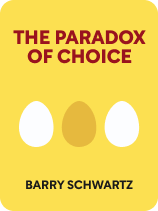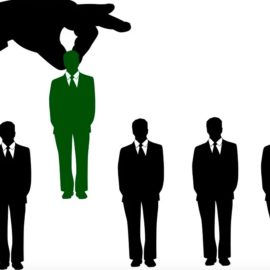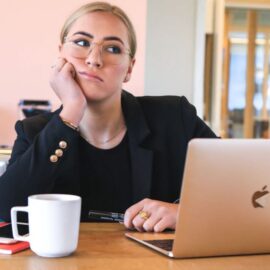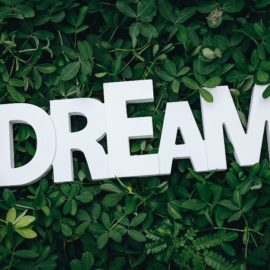

This article is an excerpt from the Shortform book guide to "The Paradox of Choice" by Barry Schwartz. Shortform has the world's best summaries and analyses of books you should be reading.
Like this article? Sign up for a free trial here .
What cognitive biases stand in the way of making good decisions? Why don’t people learn from their mistakes to make better choices in the future?
Barry Schwartz, the author of The Paradox of Choice, explores why people make bad decisions. Schwartz says there are five main reasons people act against their best interest: unreliable memories, the availability heuristic, anchoring and framing, prospect theory, and the endowment effect and sunk costs.
Keep reading to learn why people make bad decisions.
Why We Make Bad Choices
Why do people make bad decisions? Schwartz describes five cognitive biases that hinder our ability to make decisions. He references concepts developed and researched by psychologists Daniel Kahneman and Amos Tversky; many of those concepts are described in Kahneman’s book, Thinking, Fast and Slow.
1. Experienced, Remembered, and Expected Utility
We use our memories of past experiences to decide what we want in the future. Our memories aren’t always reliable, so the goals we choose for the future are based on potentially inaccurate assumptions.
Schwartz defines three concepts that explain how we use our faulty memories to make decisions: experienced utility, remembered utility, and expected utility.
- Experienced utility is how an experience makes you feel in the moment it occurs. If you attend a concert from your favorite artist and have a great time, then your sense of experienced utility tells you that this is a positive experience.
- Remembered utility is what you remember about an experience after it occurs. This can differ from experienced utility, because we never remember events exactly as they occur. Schwartz cites Kahneman, who determined that we remember experiences based on: 1) how the experience felt at its absolute best and its absolute worst, and 2) how the experience felt when it ended. Our memory of experiences as they end is particularly skewed, since the ending isn’t reflective of the whole experience. Think about the concert example: If you got stuck in the rain as it ended, your memory of the experience would sour, even though you had a fantastic experience the rest of the time.
- Expected utility is how we make choices for the future based on past experiences. Remembered utility is faulty, so our expected utility isn’t always accurate. Because of the rain, we might not get tickets to another concert again anytime soon, even though the rest of the experience was positive. We also aren’t always good at determining what we’ll want far in the future. Because of the many weaknesses of using our memories to plan for the future, it’s easy to make errors when determining goals.
| How Reliable Is Our Memory? While it’s true that our memories can be biased and skewed, scientists have had difficulty determining the extent of our memory’s reliability or unreliability. For example, Scientific American described a recent study showing that people’s memories were much more accurate than anticipated: When recalling events that happened two days ago, a study group described them with 90% accuracy, much higher than the 40% the researchers predicted. Other studies have shown that, while memories tend to be strong soon after events occur, they diminish over time. Researchers are still studying how memory works, and how well, but understanding the likelihood that our memory can be strong in the immediate aftermath of an event and weaken over time can be helpful in decision-making. For example, if you take a trip and are trying to decide whether to return next year, you might write down your thoughts immediately after the trip. Even if remembered utility biases you to consider your feelings at the end of the trip, you’ll still probably have a sharp memory of what happened at the beginning and middle. |
2. Availability Heuristic
Another factor affecting how we recall information is which memories are most readily available to us.
Kahneman and Tversky coined the term availability heuristic for our tendency to give greater weight to information we can easily recall. If we can remember something easily, we generally assume it happens frequently or it’s important.
The availability heuristic can sometimes be accurate, since the frequency of an experience or event can make it stick in our memory. However, the vividness of an experience can also make it stick in our memory regardless of how common or uncommon it is.
For example, imagine a parent who is watching the local news a week before Halloween. He sees a report describing people slipping illegal substances into Halloween candy. He decides that, this year, he will check every piece of his child’s Halloween candy. Even though it’s extremely uncommon, the parent thinks it is likely that his child’s candy will be tampered with, because the news report he saw sticks so vividly in his mind.
The availability heuristic damages our ability to make decisions, because it can cause us to give importance to experiences or pieces of information that don’t really matter. Imagine you’re planning a trip, and you’re deciding between renting a house in two beach towns. You’ve researched online reviews from vacationers in both towns, and Town #1 has overwhelmingly positive reviews, while Town #2 has overwhelmingly negative reviews. You think you’ve made up your mind, but a friend tells you she took a trip to Town #2 and had a great experience. You then book a trip to Town #2 because her advice was more vivid to you than the negative online reviews. Unfortunately, the reviews were right, and you have a bad experience in Town #2.
To counteract the availability heuristic, Schwartz recommends collecting information from a variety of sources and people. Getting multiple opinions, many of which might be memorable, can help you make informed decisions even with this cognitive bias.
| The Availability Heuristic and Media The media can significantly affect people’s perception of the frequency or prominence of certain phenomena—local media, for instance, frequently report on the risk of tainted Halloween candy, even though it almost never happens. Another example of the availability heuristic being affected by media coverage is popular perceptions of crime rates. For years, most Americans have believed that the rate of violent crime is rising. However, data does not bear that out—in fact, violent crime has been decreasing since the 1990s. An article for FiveThirtyEight makes the case that the media has an important role in this misperception, as local news outlets tend to disproportionately cover violent crimes. People see memorable reports of murders in their community; because these reports are deliberately attention-grabbing, they skew people’s perception of violent crime. By seeking out various news sources, as Schwartz recommends, we can become less susceptible to reports that are eye-catching but misleading. |
3. Anchoring and Framing
Even when we gather information from different sources, we can be led astray by making faulty comparisons. Schwartz defines two methods of comparison: anchoring and framing. Anchoring is using other items as reference points for comparison, while framing is using language to manipulate how people choose among options.
Both buyers and sellers of consumer goods use anchoring. Consumers use it to help them narrow their options, and sellers use it to incentivize customers to buy their products. For example, James needs a new sweater for fall. He typically shops from sale racks at department stores, and last year he found a sweater for $20. Now, he’s looking for a new sweater using the price of his old sweater as a point of comparison (or anchor). If he finds a sweater that’s under $20, it’s a steal, but if he can only find sweaters above $20, he’ll find them expensive in comparison.
While James is using a cheap sweater as an anchor, someone who shops at high-end stores where most sweaters are over $100 would have a different anchor—to them, a $90 sweater would be a bargain.
Most stores also use anchoring to incentivize shoppers to buy products: If a store lists many items as on sale, shoppers will think they’re getting a bargain, no matter the actual price. Companies also sometimes make high-priced versions of their products that incentivize customers to buy the regular versions, which are inexpensive in comparison.
Besides anchoring, companies also use framing to incentivize consumers to buy particular products. For example, a bookseller may offer two batches of books, one of expensive hardcover editions, the other of less expensive paperback editions. If the seller wanted people to buy the hardcovers, he might frame or describe them as “special-edition hardcovers,” and the paperbacks simply as “paperbacks.” On the other hand, if he wanted people to buy the paperbacks, he could frame or present the paperbacks as a “special discount.” The products are the same in both scenarios, but the language the bookseller uses is meant to influence which product the shoppers buy.
Because of the psychological biases they prompt, anchoring and framing can have significant effects on the decisions we make, even though they have no bearing on the actual products or experiences they describe.
| “Nudging” People to Make Choices In their book Nudge, Richard H. Thaler and Cass Sunstein identified a method of influencing people’s decisions that can help to counteract the negative effects of anchoring and framing. (Nudge also discusses other cognitive biases that Schwartz describes, including the availability heuristic.) Thaler and Sunstein argue that everyone is susceptible to numerous cognitive biases when making choices, so those responsible for presenting choices should design them in a way that leads people to make beneficial decisions. The authors call this method of leading people to good choices “nudging.” For example, if the bookseller thinks the paperbacks are flimsy and poorly printed, he could frame the hardcovers as durable or top quality to give customers an incentive to purchase them. The bookseller would therefore lead customers to a superior product. |
4. Prospect Theory
Building on their research on anchoring and framing, Kahneman and Tversky developed the concept of prospect theory. Like anchoring and framing, prospect theory describes how people choose among uncertain or risky options, and the role that bias plays in those choices.
The researchers noted that gains and losses have psychological effects influencing our decisions. As you make gains, you feel good, but as you continue making gains, the satisfaction you feel diminishes. Likewise, when you incur a loss, you feel bad, but as your losses increase, your dissatisfaction might not increase as much.
For instance, if you won $1 million at the lottery, you’d likely feel elated. If your winning were unexpectedly doubled, you might expect to feel twice as happy. However, you’d probably feel a little happier, but not much more than when you won your first million. Overall, the more you accumulate, the less additional happiness you’ll feel.
The reverse is also true: if you lost $1 million, you’d be unhappy. You’d be somewhat more unhappy if you lost $2 million, but the initial loss would feel worse than any additional loss would. Additionally, people generally feel loss more acutely than gains, according to prospect theory—so the person who lost $1 million would feel disappointment more acutely than the person who won $1 million would feel joy.
There is also a “neutral point” that determines what will feel like a loss or a gain: Anything better than the “neutral point” will feel like a gain, while anything worse than the “neutral point” is a loss. This “neutral point” is arbitrary, and can be manipulated by anchoring and framing. To extend the sweater shopping example, if a store normally sells a sweater for $40, but announces that it will be going on sale for $20, then your “neutral point” will be $40, and getting the sweater for $20 will feel like a gain.
Because our perception of gains and losses is not objectively accurate, our decision-making is affected by the risk aversion and manipulation of neutral points that prospect theory describes.
| Two Modes of Thinking Affect Decisions Kahneman and Tversky influenced Schwartz’s ideas in The Paradox of Choice—their prospect theory helps explain the biases that come into play when we’re overwhelmed with choices. In Thinking, Fast and Slow, Kahneman argues that people have two modes of thinking: System 1, which encompasses automatic reactions and processes, and System 2, which encompasses deliberate and conscious thinking. System 2 can get overwhelmed, which can lead to System 1 taking over our decision-making processes and making us more vulnerable to cognitive biases. Kahneman contends we should aim to balance System 1 and System 2 thinking in our decision-making. Prospect theory describes the biases inherent in System 1 thinking: The psychological impacts of gains and losses, and the impulse to make decisions based on an arbitrary reference point, are automatic perceptions that we don’t consciously engage with. Schwartz would likely argue that when we’re faced with too many choices, our capacity for System 2 thinking is diminished, as it will eventually take too much energy to make choices. |
5. The Endowment Effect and Sunk Costs
The endowment effect explains how and when we feel losses.
Because of the endowment effect, once you have something, you feel that it’s yours, or you “own” it. This applies even if you’ve only possessed it for a short time. Once you’ve “endowed” an item or experience with your ownership, giving it up even after five minutes will feel like a loss. The endowment effect influences when we feel something is a “loss,” in accordance with prospect theory.
The endowment effect amplifies our aversion to sunk costs, which can become losses. Sunk costs are resources you’ve already spent or invested and can’t recover. For instance, you might buy tickets to see a favorite actor in a Broadway play, then learn that an understudy will be performing the role that day. Since you “owned” the tickets per the endowment effect, you might feel compelled to see the show anyway in order to avoid a sunk cost.
Sunk costs are a particular concern for those who prioritize avoiding losses. While there’s no logical reason to do something that won’t benefit you or that you don’t want to do just to avoid feeling that you’ve “wasted” your money, an aversion to sunk costs (or a sunk cost bias) is psychologically powerful.
| How Much Do You Care About Sunk Costs? The sunk cost aversion affects most people to some extent, but some people are more susceptible to it than others. If you’re not sure how much you consider sunk costs when making decisions, this short questionnaire evaluates how susceptible you are to this bias. The questionnaire consists of several sample scenarios. For example, one scenario asks you to imagine that you’ve spent a long time on a project that doesn’t have much hope of succeeding, and while you can’t take back the time you spent on it, you have the opportunity to begin a promising new project. If you answer that you’d prefer to stay on with the unsuccessful project, it’s likely you’re susceptible to the sunk cost bias. The more decisions like this you make in the other sample scenarios, the more likely it is that you struggle with sunk costs. The questionnaire was created by economists David Ronayne, Daniel Sgroi, and Anthony Tuckwell, who also detailed their methodology in a Harvard Business Review article. They found that those who have substantial experience making decisions are less likely to be susceptible to sunk costs than those who don’t. So while most people struggle with sunk costs once in a while, you’ll likely become less influenced by them with time and experience. |

———End of Preview———
Like what you just read? Read the rest of the world's best book summary and analysis of Barry Schwartz's "The Paradox of Choice" at Shortform .
Here's what you'll find in our full The Paradox of Choice summary :
- Why the more choices we have, the more stressed and indecisive we feel
- How to better navigate our choices, from groceries to health insurance
- Whether it's better to seek the best or accept "good enough"






